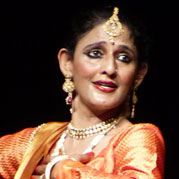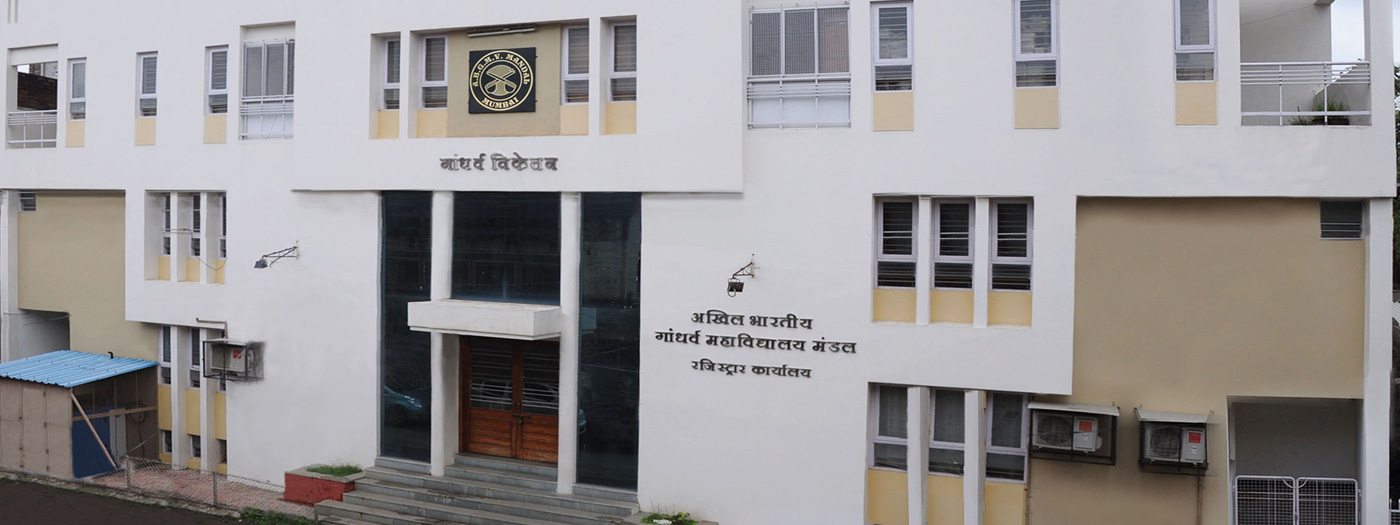Abhinaya, an important part of the Indian Classical Dance happens in stillness and evolves from written words to the world of images. As a phenomenon, it is in complete contrast to our time and space where attention is gripped by minimal text. It is about spectacles of group/solo performances, mediocre dancing and reduced content camouflaged in designer lighting, costumes and sound.
Against this, the two-day IIC Monsoon Festival of Dance on Abhinaya by the India International Centre (IIC), New Delhi served to promote the intrinsic element of the Indian Classical dances. The Festival presented Prerana Shrimali (Kathak), and, Rama Vaidyanathan (Bharatanatyam) on the first day, followed by Purva Dhanashree, (Vilasani Natyam) and Madhavi Mudgal (Odissi) on the second day.
Elemental Character
The oral transmission of the literary content for the Indian Classical dances is dictated by the tools of Shruti (heard) and Smriti (memorized). The students imbibe, innovate and re-create within a structural frame specific to each dance tradition. Ancient texts called Shastra – documented principles are theoretical but meant for practical application. They provide tenets on deliberating mimetic/dramatic aspect (Abhinaya) through – body movement (angik), facial expressions (maukhik), costuming (aharya), and (Satvik) which implies conveying the essence of a chosen content through subtleties.
Landscape of Abhinaya
The IIC Festival illustrated the important role played by literature and linguistics as content for Abhinaya art. The dancers brought a range of literature in a variety of languages – Hindi poetry of Padmakar -18thc (Shrimali); Kambar’s Ramayana (medieval Tamil) and Janabai (Marathi), Sanskrit (Vaidyanathan); Telugu Composition by Kashinath Kavi (Purvadhanashree), Odissi and Sanskrit poetry by Madhavi Mudgal.
Critiquing
Choosing and performing poetry has to have an understanding of the holistic cultural heritage landscape and context the chosen piece comes from. This provides the metaphorical equipment to the dancer to take flight into the realm of image creation.

Prerana Shrimali painted, for instance, the linguistic-cultural canvas of poet Padmakar within the metaphorical world of the Monsoon. The 18thc poet Padmakar and his predecessor Keshavdas (16th) surfaced from the foreground of Madhya-Desh. It is a linguistic environment axiomatically linked to Braj – the theme park of Krishna Bhakti. The beautifully crafted performance used the wide repertoire of abhinaya and technical nritta tools of Kathak. The performance thus exhibited the power of Kathak language and repertoire not usually seen in the usual sizzling robotic technical displays of Kathak performances today. She wove the metaphor of the Monsoon not merely as the rainy season, but that of fertility, fulfilment, and love in union catching the sound, the smell, and canvases of human emotions moving through the clouds. One, however, did hope that Shrimali was more careful about the costume since that too is seminal to the art of Abhinaya.
The attractive Rama Vaidyanathan, in contrast, appeared in a spectacular costume enrapturing the audience. Her first piece was an ‘abhang’ by the poet-saint Janabai. Abhang a poetic composition is specific to the Vaishnav (Krishna) Varkari sect of Vitthal Vithobha in Maharashtra. Vaidyanathan’s lively dance captured the spirit of the outer Maharashtrain world but the central metaphor ‘the blanket’ in the Varkari poetry that provides for the meditative journey went missing. Vitthal is perceived to be the Blanket thief. The belief is that the body of every individual wears two blankets – the temporal blanket of ignorance, and the other blanket of consciousness. As a pilgrim journey in life, Vitthal repeatedly steals the blanket of ignorance and the believer, in turn, works to recover the blanket of awakened consciousness from the Lord.

The limited bhav as an interface with the three forms of Krishna did not incorporate the process of performing the path of realization for which the metaphor of the blanket was so essential. Vaidyanathan’s piece from the Kambar’s Ramayana howbeit powerfully illustrated the mental state of the last night of Ravana, before his death.

The presentation of Purva Dhanashree presented, on the one hand, the ethos of the month of Shravan, first with the devotion to Shiva and then through the metaphor of Krishna. But, it was the Padam by Kasturi Ranga that formed the central piece rendering the multi-layered sociological subversion of a gendered feminine self. The performer explained first (which was unfortunately quite long) but then she performed with mastery illustrating the subtle swings of the moods, the emotive streams that drew the audiences to journey with the dancer to empathize with the woman to powerfully accomplish the idea of Abhinaya.
The performance of the extremely well-maintained senior dancer Madahvi Mudgal rested on the superb music compositions that captured through sound a range of emotions of unusual selected pieces. The voice of Mukul Shivaputra rendering the complex Amaru Shatakam was just enthralling.
Questions:
The relocation of the Indian classical dance in the performance space of the modern proscenium poses a challenge to dancers since predominantly there is a significant distance between the performer and the audiences. There is fear that subtleties are lost. However, says Pandit Birju Maharaj, “It is about honesty (imaandaari), the detailing of deliberating subtle gestures is essential and similar to the minor brush strokes in a painting to create a texture. Even if it is a big stage, and the audience is far, the detailed nuances will convey the essence and the special quality of the poetry and you as a dancer.”
Alongside as mentioned earlier contemplation on the cultural landscape from where compositions are important for inventiveness as manodharma or upaj.
[adrotate group=”9″]
In the IIC Festival, one also wondered whether Abhinaya is about the quantity of ‘items’ in performance or was the festival intended to present the phenomenon of ‘rasa’ through a certain process? Some dancers in the festival gave weight to the number of ‘items’ rather than the process of abhinaya.
There was and remains the dilemma of bridging linguistics with an audience who may not understand the languages of the performed text. The dancer needs to measure and negotiate how much to explain and how much to leave to the audience. After all, there is the present reality of an audience who may not be too well-read, or familiar with hand gestures communicating images even though they are witness to more than 100 images a day.
But, most importantly, Abhinaya is a process of gripping the soul of image-making in stillness – Like the Monsoon, it too is about contemplation and retreat. “Dancers need to know that the idea of abhinaya can happen alone in the darkness before bringing it to light through performance,” said Kapila Vatsyayan. Decoding metaphors through image-making is about enjoining the mind with body, the earth with body and mind and evolving a path to liberate as rasa-bhava.
Abhinaya is the act of looking and of answering with a gift of intense visibility. It involves scanning the physical world, probing fine phenomena that govern the manner the performer similar to a paintbrush uses the body and the face.
[adrotate group=”9″]
Abhinaya evokes the chosen text but aims to go beyond and awaken in both the performer and the audience the image-making journey. The performance of abhinaya is a process of an unfolding mystery where dancers find themselves to create a phenomenon to fulfil themselves and impart the energies to the rasikas. The power of Abhinaya can just not be hidden behind designer costumes, lighting, and spectacles. As Kapila Vatsyayan observes, “Dance makes you naked on the stage.”
Case Study – Shanta Rao:

Any discussion on Abhinaya inevitably conjures the reference of Balasaraswati and Shambhu Maharaj. Nonetheless, there is the spectacular journey of the esoteric Shanta Rao. Writes her biographer and friend Ashok Chatterjee that she went to learn Bhama Sutram from an Andhra priest, Venkata Chalapathy Shastry who was the last in a hereditary line of a cult of Bhama Sutram. It was not a dance form but were rituals performed in secret within a temple. Shanta entered the temple alone, without an escort. Then when she performed at Indian National Theatre in Bombay a leading city newspaper hailed Shanta as a pioneering force comparable to Picasso. The creation of Rasa was an inner journey to stillness. Shanta said “Bhama Nrityam is the gods’ gift to me. I feel a whole new world opening. It is as if my musicians and I stand at an open doorway, dancing, singing and playing our instruments for the very first time.” That is a phenomenon of a ritual called Abhinaya!









